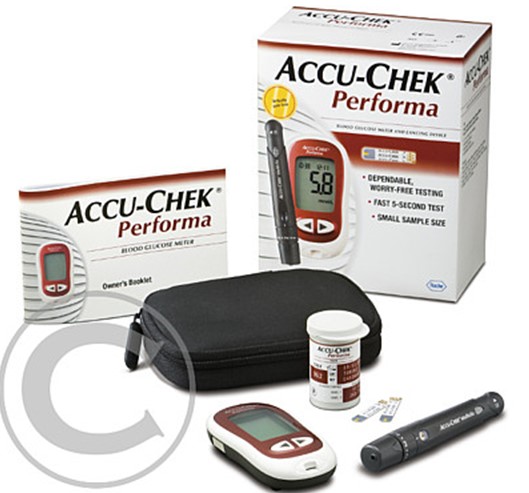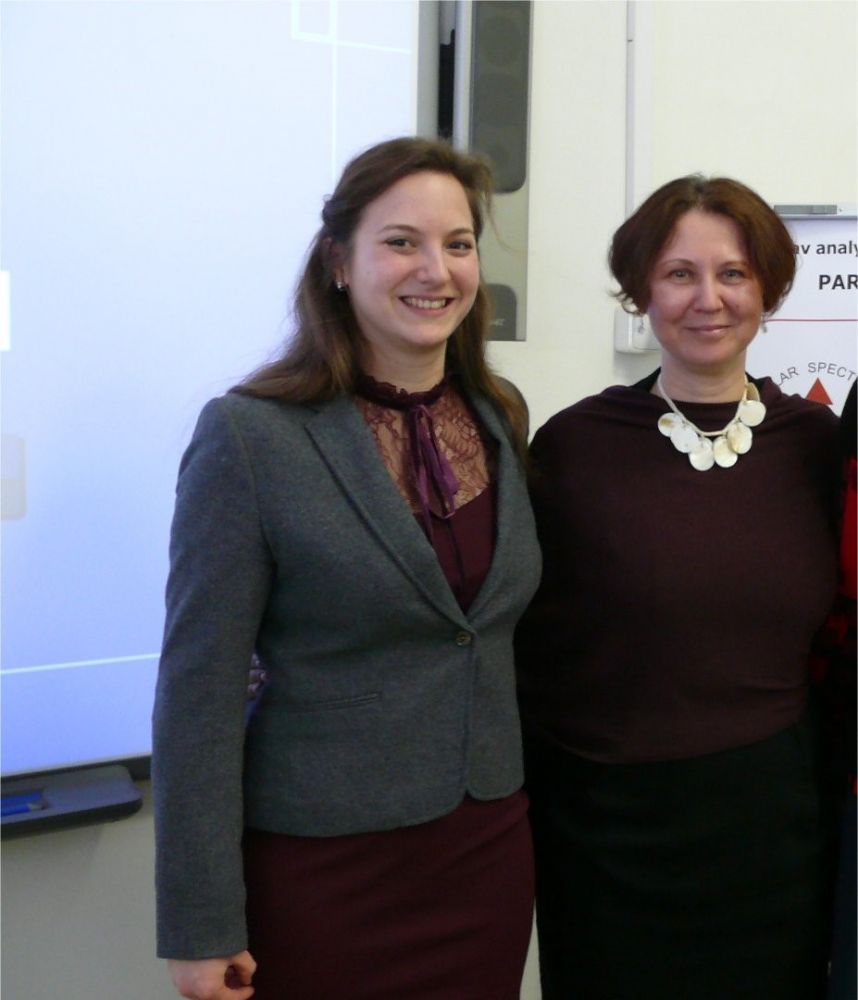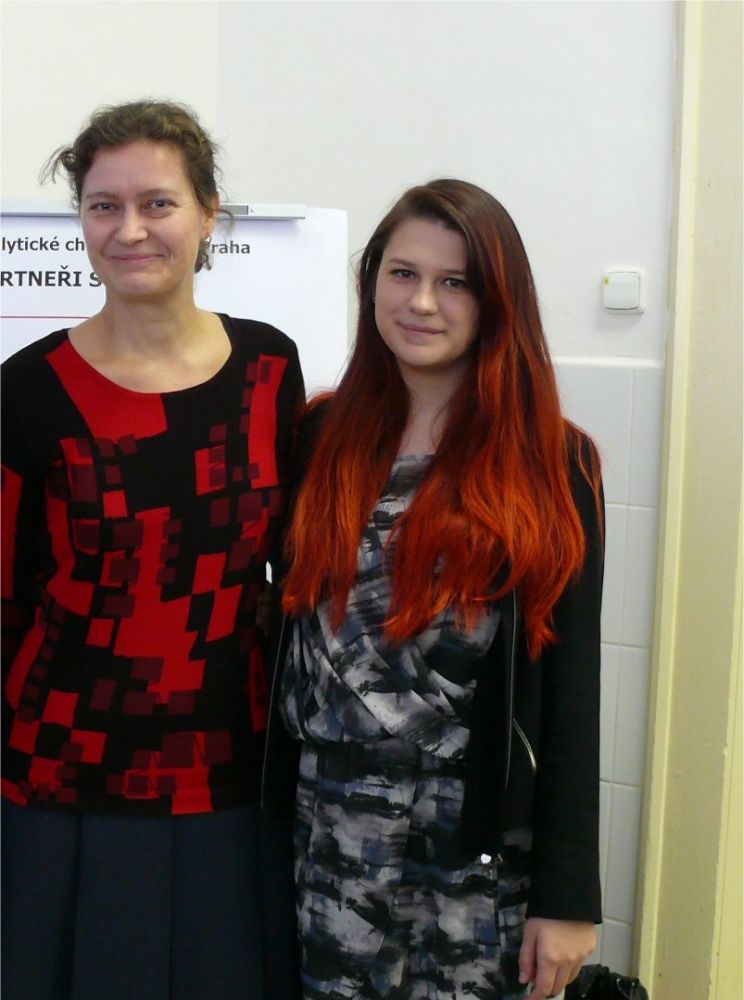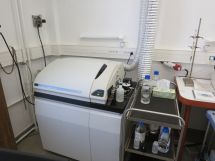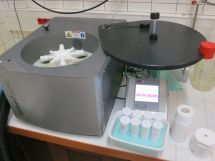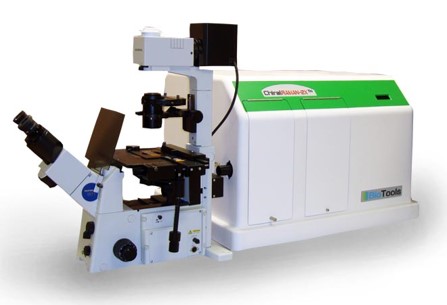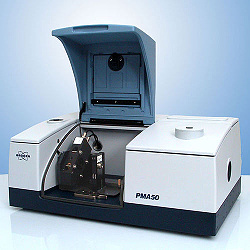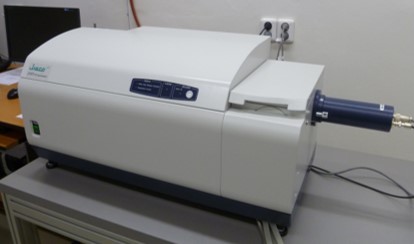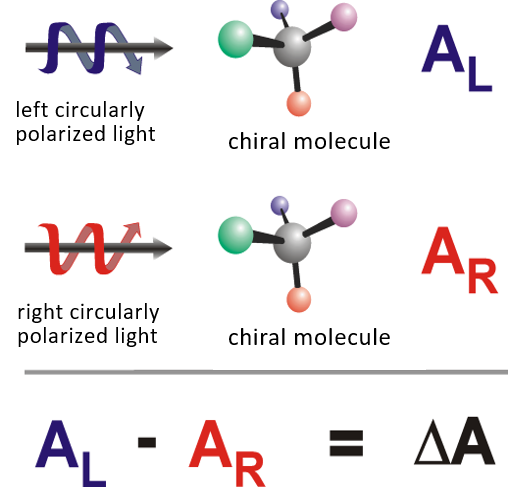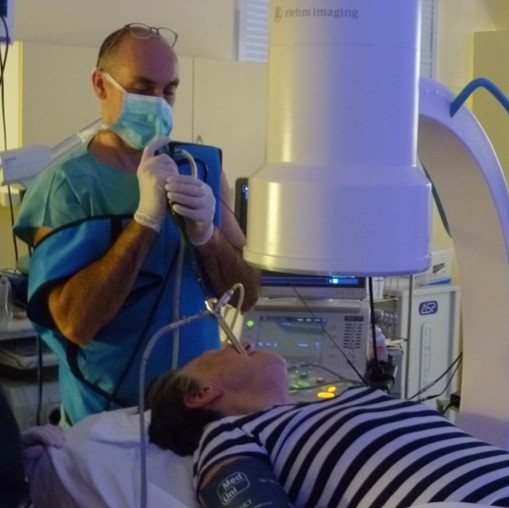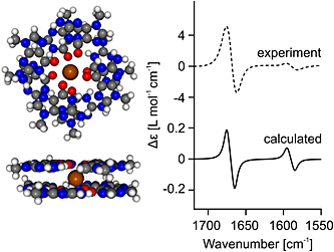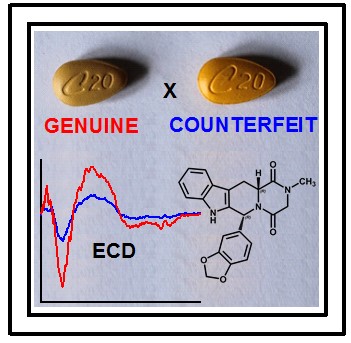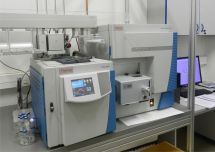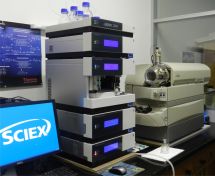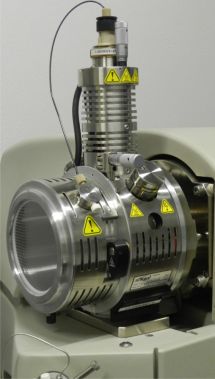stdClass Object
(
[nazev] => Department of Analytical Chemistry
[adresa_url] =>
[api_hash] =>
[seo_desc] =>
[jazyk] =>
[jednojazycny] =>
[barva] =>
[indexace] => 1
[obrazek] =>
[ga_force] =>
[cookie_force] =>
[secureredirect] =>
[google_verification] =>
[ga_account] =>
[ga_domain] =>
[ga4_account] => G-VKDBFLKL51
[gtm_id] =>
[gt_code] =>
[kontrola_pred] =>
[omezeni] => 0
[pozadi1] =>
[pozadi2] =>
[pozadi3] =>
[pozadi4] =>
[pozadi5] =>
[robots] =>
[htmlheaders] =>
[newurl_domain] => 'uanlch.vscht.cz'
[newurl_jazyk] => 'en'
[newurl_akce] => '[en]'
[newurl_iduzel] => 10037
[newurl_path] => 8548/10022/10024
[newurl_path_link] => Odkaz na newurlCMS
[iduzel] => 10024
[platne_od] => 31.10.2023 17:08:00
[zmeneno_cas] => 31.10.2023 17:08:41.164308
[zmeneno_uzivatel_jmeno] => Jan Kříž
[canonical_url] =>
[idvazba] => 11735
[cms_time] => 1714596063
[skupina_www] => Array
(
)
[slovnik] => stdClass Object
(
[logo_href] => /
[logo] =>  [google_search] => 001523547858480163194:u-cbn29rzve
[social_fb_odkaz] =>
[social_tw_odkaz] =>
[social_yt_odkaz] =>
[aktualizovano] => Updated
[autor] => Author
[paticka_budova_a_nadpis] => BUILDING A
[paticka_budova_a_popis] => Rector,
Department of Communications,
Department of Education,
FCT Dean’s Office,
Centre for Information Services
[paticka_budova_b_nadpis] => BUILDING B
[paticka_budova_b_popis] => Department of R&D, Dean’s Offices:
FET,
FFBT,
FCE,
Computer Centre,
Department of International Relations,
Bursar
[paticka_budova_c_nadpis] => BUILDING C
[paticka_budova_c_popis] => Crèche Zkumavka,
General Practitioner,
Department of Economics and Management,
Department of Mathematics
[paticka_budova_1_nadpis] => NATIONAL LIBRARY OF TECHNOLOGY
[paticka_budova_1_popis] =>
[paticka_budova_2_nadpis] => CAFÉ CARBON
[paticka_budova_2_popis] =>
[paticka_adresa] => UCT Prague
[google_search] => 001523547858480163194:u-cbn29rzve
[social_fb_odkaz] =>
[social_tw_odkaz] =>
[social_yt_odkaz] =>
[aktualizovano] => Updated
[autor] => Author
[paticka_budova_a_nadpis] => BUILDING A
[paticka_budova_a_popis] => Rector,
Department of Communications,
Department of Education,
FCT Dean’s Office,
Centre for Information Services
[paticka_budova_b_nadpis] => BUILDING B
[paticka_budova_b_popis] => Department of R&D, Dean’s Offices:
FET,
FFBT,
FCE,
Computer Centre,
Department of International Relations,
Bursar
[paticka_budova_c_nadpis] => BUILDING C
[paticka_budova_c_popis] => Crèche Zkumavka,
General Practitioner,
Department of Economics and Management,
Department of Mathematics
[paticka_budova_1_nadpis] => NATIONAL LIBRARY OF TECHNOLOGY
[paticka_budova_1_popis] =>
[paticka_budova_2_nadpis] => CAFÉ CARBON
[paticka_budova_2_popis] =>
[paticka_adresa] => UCT Prague
Technická 5
166 28 Prague 6 – Dejvice
IČO: 60461373 / VAT: CZ60461373
Czech Post certified digital mail code: sp4j9ch
Copyright: UCT Prague 2015
Information provided by the Department of International Relations and the Department of R&D. Technical support by the Computing Centre.
[paticka_odkaz_mail] => mailto:Nikola.Kratka@vscht.cz
[social_fb_title] =>
[social_tw_title] =>
[social_yt_title] =>
[paticka_mapa_alt] =>
[intranet_odkaz] => http://intranet.vscht.cz/
[intranet_text] => Intranet
[logo_mobile_href] => /
[logo_mobile] =>  [mobile_over_nadpis_menu] => Menu
[mobile_over_nadpis_search] => Search
[mobile_over_nadpis_jazyky] => Languages
[mobile_over_nadpis_login] => Login
[menu_home] => Homepage
[zobraz_desktop_verzi] => switch to desktop version
[api_obor_druh_N] => Master Degree
[charakteristika] => Profile of the programme
[vice] => more
[uplatneni] => Alumni profiles
[studijni_plan] => Study Plan
[mene] => less
[drobecky] => You are here: UCT Prague – UANLCH
[zobraz_mobilni_verzi] => switch to mobile version
[paticka_mapa_odkaz] =>
[nepodporovany_prohlizec] => For full access, please use different browser.
[preloader] => Wait a second...
[hledani_nadpis] => hledání
[hledani_nenalezeno] => Nenalezeno...
[hledani_vyhledat_google] => vyhledat pomocí Google
[social_in_odkaz] =>
[zobrazit_kalendar] =>
[zobrazit_vice_kalendar] =>
[den_kratky_3] =>
[archiv_novinek] =>
[novinky_servis_archiv_rok] =>
[novinky_kategorie_1] =>
[novinky_kategorie_2] =>
[novinky_kategorie_3] =>
[novinky_kategorie_4] =>
[novinky_kategorie_5] =>
[novinky_archiv_url] => Archive
[novinky_servis_nadpis] =>
[novinky_dalsi] => More news
[novinky_archiv] =>
[social_li_odkaz] =>
)
[poduzel] => stdClass Object
(
[10027] => stdClass Object
(
[obsah] =>
[poduzel] => stdClass Object
(
[48938] => stdClass Object
(
[obsah] =>
[iduzel] => 48938
[canonical_url] => _clone_
[skupina_www] => Array
(
)
[url] =>
[sablona] => stdClass Object
(
[class] =>
[html] =>
[css] =>
[js] =>
[autonomni] =>
)
)
[10036] => stdClass Object
(
[obsah] =>
[iduzel] => 10036
[canonical_url] => //uanlch.vscht.cz
[skupina_www] => Array
(
)
[url] =>
[sablona] => stdClass Object
(
[class] =>
[html] =>
[css] =>
[js] =>
[autonomni] =>
)
)
[10035] => stdClass Object
(
[obsah] =>
[iduzel] => 10035
[canonical_url] => //uanlch.vscht.cz
[skupina_www] => Array
(
)
[url] =>
[sablona] => stdClass Object
(
[class] =>
[html] =>
[css] =>
[js] =>
[autonomni] =>
)
)
)
[iduzel] => 10027
[canonical_url] => //uanlch.vscht.cz/10027
[skupina_www] => Array
(
)
[url] => /[en]/10027
[sablona] => stdClass Object
(
[class] => api_kalendar
[html] =>
[css] =>
[js] =>
[autonomni] => 1
)
)
[10028] => stdClass Object
(
[obsah] =>
[poduzel] => stdClass Object
(
[52254] => stdClass Object
(
[nazev] =>
[seo_title] => HRMS 2022
[seo_desc] =>
[autor] =>
[autor_email] =>
[perex] =>
[mobile_over_nadpis_menu] => Menu
[mobile_over_nadpis_search] => Search
[mobile_over_nadpis_jazyky] => Languages
[mobile_over_nadpis_login] => Login
[menu_home] => Homepage
[zobraz_desktop_verzi] => switch to desktop version
[api_obor_druh_N] => Master Degree
[charakteristika] => Profile of the programme
[vice] => more
[uplatneni] => Alumni profiles
[studijni_plan] => Study Plan
[mene] => less
[drobecky] => You are here: UCT Prague – UANLCH
[zobraz_mobilni_verzi] => switch to mobile version
[paticka_mapa_odkaz] =>
[nepodporovany_prohlizec] => For full access, please use different browser.
[preloader] => Wait a second...
[hledani_nadpis] => hledání
[hledani_nenalezeno] => Nenalezeno...
[hledani_vyhledat_google] => vyhledat pomocí Google
[social_in_odkaz] =>
[zobrazit_kalendar] =>
[zobrazit_vice_kalendar] =>
[den_kratky_3] =>
[archiv_novinek] =>
[novinky_servis_archiv_rok] =>
[novinky_kategorie_1] =>
[novinky_kategorie_2] =>
[novinky_kategorie_3] =>
[novinky_kategorie_4] =>
[novinky_kategorie_5] =>
[novinky_archiv_url] => Archive
[novinky_servis_nadpis] =>
[novinky_dalsi] => More news
[novinky_archiv] =>
[social_li_odkaz] =>
)
[poduzel] => stdClass Object
(
[10027] => stdClass Object
(
[obsah] =>
[poduzel] => stdClass Object
(
[48938] => stdClass Object
(
[obsah] =>
[iduzel] => 48938
[canonical_url] => _clone_
[skupina_www] => Array
(
)
[url] =>
[sablona] => stdClass Object
(
[class] =>
[html] =>
[css] =>
[js] =>
[autonomni] =>
)
)
[10036] => stdClass Object
(
[obsah] =>
[iduzel] => 10036
[canonical_url] => //uanlch.vscht.cz
[skupina_www] => Array
(
)
[url] =>
[sablona] => stdClass Object
(
[class] =>
[html] =>
[css] =>
[js] =>
[autonomni] =>
)
)
[10035] => stdClass Object
(
[obsah] =>
[iduzel] => 10035
[canonical_url] => //uanlch.vscht.cz
[skupina_www] => Array
(
)
[url] =>
[sablona] => stdClass Object
(
[class] =>
[html] =>
[css] =>
[js] =>
[autonomni] =>
)
)
)
[iduzel] => 10027
[canonical_url] => //uanlch.vscht.cz/10027
[skupina_www] => Array
(
)
[url] => /[en]/10027
[sablona] => stdClass Object
(
[class] => api_kalendar
[html] =>
[css] =>
[js] =>
[autonomni] => 1
)
)
[10028] => stdClass Object
(
[obsah] =>
[poduzel] => stdClass Object
(
[52254] => stdClass Object
(
[nazev] =>
[seo_title] => HRMS 2022
[seo_desc] =>
[autor] =>
[autor_email] =>
[perex] => The 26th International Conference on High Resolution Molecular Spectroscopy
[ikona] =>
[obrazek] =>
[ogobrazek] =>
[pozadi] =>
[obsah] => 15:32:06
Prof. Per Jensen obituary
(One section on conference will be dedicated to Per Jensen and will be led by Dr. Špirko)
You can find the 1st Circular here
You can find the 2nd Circular here
You can find the 3rd Circular here
You can find the 4th Circular here
Jointly organized by Department of Electromagnetic Field, Faculty of Electrical Engineering
Czech Technical University in Prague
You can find the abstract template in docx here and pdf here
Registration and payment instruction you can find here
Registration for the conference Praha 2022 is OPEN now.
[urlnadstranka] =>
[iduzel] => 52254
[canonical_url] =>
[skupina_www] => Array
(
)
[url] => /praha2022
[sablona] => stdClass Object
(
[class] => stranka
[html] =>
[css] =>
[js] =>
[autonomni] => 1
)
)
[10037] => stdClass Object
(
[nazev] =>
[seo_title] => Home
[seo_desc] =>
[autor] =>
[autor_email] =>
[perex] =>
[ikona] =>
[obrazek] =>
[ogobrazek] =>
[pozadi] =>
[obsah] => The activities at the Department of Analytical Chemistry are very wide, including studies from molecules in the gas phase to sophisticated analyses of complex biosystems. In research projects, not only high-end chromatographic (GC-, LC-MS), electrochemical and spectroscopic (UV-VIS, IR, CD, ROA, NMR) techniques are used but also original optical and electrochemical sensors or unique spectroscopic systems in microwave to terahertz regions, which are able to distinguish even the hyperfine effects caused by nuclear spins, are used to solve complicated problems. These include development of new diagnostic methods for serious and degenerative diseases (cancer, diabetes, Alzheimer's disease, etc.), development of new techniques for forensic science (offender profile by odor trace, digitization of odor signatures, drug profiling, drug counterfeiting analysis, etc.), stability analysis and dosage forms of pharmaceuticals, identifying new free radicals and molecular fragments for astrophysical research or developing and validating new methods of analyzing specific samples.
The scope of activities of individual groups is determined by particularly solved grant projects, but also by students' interest in obtaining a professional qualification. When solving projects, there is cooperation not only with foreign and domestic institutions but also among themselves, therefore some of the employees of the Department are listed in more working groups.
In addition to teaching staff and researchers, they are per se considered to be individual groups of doctors who have a significant proportion of participants in the scientific performance of the Department of Analytical Chemistry. Specific topics of their doctoral theses are listed in the SIS and are listed in the list of doctoral students on our website.
[urlnadstranka] =>
[iduzel] => 10037
[canonical_url] =>
[skupina_www] => Array
(
)
[url] => /home
[sablona] => stdClass Object
(
[class] => stranka_galerie_velka
[html] =>
[css] =>
[js] =>
[autonomni] => 1
)
)
[48842] => stdClass Object
(
[nazev] => Our department
[seo_title] => Department
[seo_desc] =>
[autor] =>
[autor_email] =>
[perex] =>
[ikona] =>
[obrazek] =>
[obsah] =>
[urlnadstranka] =>
[iduzel] => 48842
[canonical_url] =>
[skupina_www] => Array
(
)
[url] => /department
[sablona] => stdClass Object
(
[class] => stranka_submenu
[html] =>
[css] =>
[js] =>
[autonomni] => 1
)
)
[48894] => stdClass Object
(
[nazev] => Studies
[seo_title] => Studies
[seo_desc] =>
[autor] =>
[autor_email] =>
[perex] =>
[ikona] =>
[obrazek] =>
[obsah] => Analytical chemistry is a multidisciplinary field using knowledge from the different fields of chemistry and physics to determine the atomic and molecular composition of samples, the structure and conformation of molecules, intermolecular interactions and morphology in the condensed phase, or to analyze the quantitative representation of atoms and molecules in a sample. It is based mainly on the knowledge of physical chemistry, chemical physics, and electrochemistry, but also on the results of mathematical statistics, quantum mechanics, quantum chemistry, biochemistry, organic and inorganic chemistry and in recent decades also knowledge in electronics, computer technology and signal processing.
Methods of chemical analysis have extensive applications. It is not just chemistry itself, analytical chemistry finds vital applications in medicine in diagnostic methods, in pharmacy, in forensic sciences, in environmental studies, in the food industry, in the cosmetics industry, in the material sciences, in physiology, in the military, in meteorology, space research, automotive, metallurgy, energy, and many other fields.
The Institute of Analytical Chemistry provides teaching of all courses with codes x402xxx (EIS). These are the basic subjects, which include Analytical Chemistry I and II, and the subjects for the individual bachelor, master, and doctoral programs.
In addition to theoretical education, great emphasis is placed on mastering practical work and basic and advanced techniques in laboratories. Therefore, individual laboratories are equipped with a sufficient number of quality instruments allowing each student to work alone in pairs.
Among the disciplines at ICT Prague, graduates of analytical chemistry have an unrivaled position in the labor market.
For information about bachelor and master programs in English click here.
[urlnadstranka] =>
[iduzel] => 48894
[canonical_url] =>
[skupina_www] => Array
(
)
[url] => /studies
[sablona] => stdClass Object
(
[class] => stranka_submenu
[html] =>
[css] =>
[js] =>
[autonomni] => 1
)
)
[48872] => stdClass Object
(
[nazev] => Research and Development
[seo_title] => Research and Development
[seo_desc] =>
[autor] =>
[autor_email] =>
[perex] =>
[ikona] => mikroskop
[obrazek] =>
[obsah] => The research at the Department of Analytical Chemistry is very wide, including studies from molecules in the gas phase to sophisticated analyses of complex biosystems. In research projects, not only high-end chromatographic (GC-, LC-MS), electrochemical and spectroscopic (UV-VIS, IR, CD, ROA, NMR) techniques are used but also original optical and electrochemical sensors or unique spectroscopic systems in microwave to terahertz regions, which are able to distinguish even the hyperfine effects caused by nuclear spins, are used to solve complicated problems. These include development of new diagnostic methods for serious and degenerative diseases (cancer, diabetes, Alzheimer's disease, etc.), development of new techniques for forensic science (offender profile by odor trace, digitization of odor signatures, drug profiling, drug counterfeiting analysis, etc.), stability analysis and dosage forms of pharmaceuticals, identifying new free radicals and molecular fragments for astrophysical research or developing and validating new methods of analyzing specific samples.
The scope of activities of individual groups is determined by particularly solved grant projects, but also by students' interest in obtaining a professional qualification. When solving projects, there is cooperation not only with foreign and domestic institutions but also among themselves, therefore some of the employees of the Department are listed in more working groups.
In addition to teaching staff and researchers, they are per se considered to be individual groups of doctors who have a significant proportion of participants in the scientific performance of the Department of Analytical Chemistry. Specific topics of their doctoral theses are listed in the SIS and are listed in the list of doctoral students on our website.
Research groups
Name
Leader
Contact
Forensic Olfactronics
Prof. Š. Urban
Stepan.Urban(at)vscht.cz
Electroanalytical Methods
Assoc. Prof. T. Šiškanova
Tatjana.Siskanova(at)vscht.cz
Microwave and Terahertz Spectroscopy
Prof. Š. Urban
Stepan.Urban(at)vscht.cz
NMR and Molecular Recognition
Assoc. Prof. B. Dolenský
Bohumil.Dolensky(at)vscht.cz
Atomic Spectrometry
Prof. O. Mestek
Oto.Mestek(at)vscht.cz
Vibrational Spectrometry
Prof. V. Setnička
Vladimir.Setnicka(at)vscht.cz
Chiroptical Methods
Prof. V. Setnička
Vladimir.Setnicka(at)vscht.cz
Separation Methods
Assoc. Prof. D. Sýkora
David.Sykora(at)vscht.cz
Radioanalytical methods
Assoc. Prof. P. Řezanka
Pavel.Rezanka(at)vscht.cz
[urlnadstranka] =>
[iduzel] => 48872
[canonical_url] =>
[skupina_www] => Array
(
)
[url] => /research
[sablona] => stdClass Object
(
[class] => stranka_submenu
[html] =>
[css] =>
[js] =>
[autonomni] => 1
)
)
[20435] => stdClass Object
(
[nazev] => Contacts
[seo_title] => Contacts
[seo_desc] =>
[autor] =>
[autor_email] =>
[perex] =>
[ikona] => telefon-zvoni
[obrazek] =>
[ogobrazek] =>
[pozadi] =>
[obsah] => | Head: | doc. Ing. Bohumil Dolenský, Ph.D. |
| phone: | 220 444 110 |
| email: | Bohumil.Dolensky@vscht.cz |
| Department administrator: | doc. Ing. Antonín Kaňa, Ph.D. |
| phone: | 220 445 057 |
| email: | Antonin.Kana@vscht.cz |
| Department vice-administrator: | Ing. Magda Vosmanská, CSc. |
| phone: | 220 443 719 |
| email: | Magda.Vosmanska@vscht.cz |
| Secretary: | Bc. Pavla Pouzarová |
| phone: | 220 444 044 |
| email: |
| Secretary: | Perla Maršíčková |
| phone: | 220 444 043 |
| email: | perla.marsickova@vscht.cz |
| office hours for students | Mo - Fr 9:30 – 11:30 |
| Mon, Tue, Thur 14:00 - 15:00 |
| Economist: | Petr Beneš |
| phone: | 220 444 058 |
| email: | Petrik.Benes@vscht.cz |
All contacts can be found in the phonebook of UCT.
Address:
Department of Analytical Chemistry
University of Chemistry and Technology Prague
Technická 5
166 28 Praha 6 - Dejvice, Czech Republic
DATA
stdClass Object
(
[nazev] => Research and Development
[seo_title] => Research and Development
[seo_desc] =>
[autor] =>
[autor_email] =>
[perex] =>
[ikona] => mikroskop
[obrazek] =>
[ogobrazek] =>
[pozadi] =>
[obsah] => The research at the Department of Analytical Chemistry is very wide, including studies from molecules in the gas phase to sophisticated analyses of complex biosystems. In research projects, not only high-end chromatographic (GC-, LC-MS), electrochemical and spectroscopic (UV-VIS, IR, CD, ROA, NMR) techniques are used but also original optical and electrochemical sensors or unique spectroscopic systems in microwave to terahertz regions, which are able to distinguish even the hyperfine effects caused by nuclear spins, are used to solve complicated problems. These include development of new diagnostic methods for serious and degenerative diseases (cancer, diabetes, Alzheimer's disease, etc.), development of new techniques for forensic science (offender profile by odor trace, digitization of odor signatures, drug profiling, drug counterfeiting analysis, etc.), stability analysis and dosage forms of pharmaceuticals, identifying new free radicals and molecular fragments for astrophysical research or developing and validating new methods of analyzing specific samples.
The scope of activities of individual groups is determined by particularly solved grant projects, but also by students' interest in obtaining a professional qualification. When solving projects, there is cooperation not only with foreign and domestic institutions but also among themselves, therefore some of the employees of the Department are listed in more working groups.
In addition to teaching staff and researchers, they are per se considered to be individual groups of doctors who have a significant proportion of participants in the scientific performance of the Department of Analytical Chemistry. Specific topics of their doctoral theses are listed in the SIS and are listed in the list of doctoral students on our website.
Research groups
Name
Leader
Contact
Forensic Olfactronics
Prof. Š. Urban
Stepan.Urban(at)vscht.cz
Electroanalytical Methods
Assoc. Prof. T. Šiškanova
Tatjana.Siskanova(at)vscht.cz
Microwave and Terahertz Spectroscopy
Prof. Š. Urban
Stepan.Urban(at)vscht.cz
NMR and Molecular Recognition
Assoc. Prof. B. Dolenský
Bohumil.Dolensky(at)vscht.cz
Atomic Spectrometry
Prof. O. Mestek
Oto.Mestek(at)vscht.cz
Vibrational Spectrometry
Prof. V. Setnička
Vladimir.Setnicka(at)vscht.cz
Chiroptical Methods
Prof. V. Setnička
Vladimir.Setnicka(at)vscht.cz
Separation Methods
Assoc. Prof. D. Sýkora
David.Sykora(at)vscht.cz
Radioanalytical methods
Assoc. Prof. P. Řezanka
Pavel.Rezanka(at)vscht.cz
[submenuno] =>
[urlnadstranka] =>
[newurl_domain] => 'uanlch.vscht.cz'
[newurl_jazyk] => 'en'
[newurl_akce] => '/research'
[newurl_iduzel] => 48872
[newurl_path] => 8548/10022/10024/10028/48872
[newurl_path_link] => Odkaz na newurlCMS
[iduzel] => 48872
[platne_od] => 21.01.2020 16:24:00
[zmeneno_cas] => 21.01.2020 16:24:54.695754
[zmeneno_uzivatel_jmeno] => Kamil Záruba
[canonical_url] =>
[idvazba] => 55170
[cms_time] => 1714598785
[skupina_www] => Array
(
)
[slovnik] => Array
(
)
[poduzel] => stdClass Object
(
[48877] => stdClass Object
(
[nazev] => Forensic Olfactronics
[seo_title] => Forensic Olfactronics
[seo_desc] =>
[autor] =>
[autor_email] =>
[perex] => The forensic olfactronics group is focused on detailed chemical analysis of human scent samples and other biological materials, mainly using advanced GC-MS techniques. The group aims to distinguish among the hundreds of compounds forming the human scent with a focus on the compounds that form the so-called human scent signature, which would allow an objective identification of the individual. Besides, compounds that would allow so-called class identifications (gender, age, race, and so on) are also the point of interest in the scent profiles. These findings would provide criminalists with a useful tool for their investigation. A very advanced tool for the authorities in criminal proceedings should then be the introduction of the so-called digital scent signature, which would allow the establishment of a criminalistic database of human scent signatures, their computer comparison, and the possibility of their distribution via the Internet.
[ikona] =>
[obrazek] =>
[ogobrazek] =>
[pozadi] =>
[obsah] => |
Head: |
Prof. Dr. Štěpán Urban |
|
Dr. Oldřich Vyhnálek Veronika Škeříková, Ph.D. Petr Doležal, Ph.D. (ext.) |
|
|
Ph.D. students: |
Petra Pojmanová, nee Cinková, M.Sc. (ŠU)* Nikola Ladislavová, M.Sc. (ŠU)* Vlastimil Stenzl, M.Sc. (ŠU)* |
* supervisors listed in brackets: ŠU = Prof. Dr. Urban
Group goals:
- The digitization of scent signature
- Finding correlations between scent profiles and secondary characteristics of an individual (age, sex, race, etc.)
- The development of non-contact scent collection equipment
- The optimization of the scent collection process, including used sorption materials
- The development of GC-MS and GC × GC-TOF / MS methods for human scent analysis
Selection of final theses from recent years:
- Medicines and addictive drugs in the human scent
- The human scent composition influenced by smoking and by consumption of alcohol
- The differences in human scents depending on the person´s age
- The difference in the molecular composition of man and woman body scent
- Influences of the gravidity, childbearing and breastfeeding to the chemical composition of the human scent trace
- Class identification: Ethnic and race determination of human scent
- Detection of molecular indicators of diseases in breathing out air
- Scent collection device for chemical analysis
- Evaluation of sorbent properties for odour sampling from various parts of the human body
- Algorithm for the quantitative evaluation of scent samples
Publications:
Scientific papers in impacted journals:
- Pojmanová, P.; Ladislavová N.; Škeříková, V.; Kania, P.; Urban, Š.; Human scent samples for chemical analysis. Chem. Pap. 2019. https://doi.org/10.1007/s11696-019-00989-2
- Doležal P.; Furton K. G.; Lněničková J.; Kyjaková P.; Škeříková V.; Valterová I.; Pinc L.; Urban Š., Multiplicity of human scent signature. Egypt. J. Forensic Sci. 2019, 9 (1), 7. https://doi.org/10.1186/s41935-019-0112-z
- Doležal, P.; Kyjaková, P.; Valterová, I.; Urban, Š., Qualitative analyses of less-volatile organic molecules from female skin scents by comprehensive two dimensional gas chromatography–time of flight mass spectrometry. J. Chromatogr. A 2017, 1505, 77-86. https://doi.org/10.1016/j.chroma.2017.04.062
Scientific papers in non-impacted journals with peer review:
- Lněničková, J.; Doležal, P.; Cinková, P.; Vyplelová, P.; Pinc, L.; Vyhnálek, O.; Škeříková, V.; Urban, Š. Vlastnosti lidské pachové stopy a multiplicita pachové signatury, Kriminalistický sborník, 2, Praha 2017, 60-66.
- Doležal, P.; Lněničková, J.; Cinková, P.; Benediktová, K.; Pinc, L.; Urban, Š. Molekulová skladba pachové signatury člověka, in: M. Vitnerová (Ed.) Kriminalistika 3, Praha 2016, 200-210.
Certified methodology:
- Urban, Š; Pinc, L.; Škeříková, V.; Vyhnálek, O.; Cinková, P.; Doležal, P., Metodika odběru lidského pachu pro chemickou analýzu. Recognized certified methodology within the project Scent Signature, no. VF20140215036 (2016).
[urlnadstranka] => [poduzel] => Array ( ) [iduzel] => 48877 [canonical_url] => [skupina_www] => Array ( ) [url] => /research/olfaktronics [sablona] => stdClass Object ( [class] => stranka_ikona [html] => [css] => [js] => [autonomni] => 1 ) ) [48888] => stdClass Object ( [obsah] => [poduzel] => stdClass Object ( [48889] => stdClass Object ( [nadpis] => [popis] => [platne_od] => [platne_do] => [odkaz] => [text_odkazu] => [obrazek_pozadi] => kvalab1.jpg [barva_textu] => [iduzel] => 48889 [canonical_url] => _clone_ [skupina_www] => Array ( ) [url] => [sablona] => stdClass Object ( [class] => slider [html] => [css] => [js] => [autonomni] => 0 ) ) ) [iduzel] => 48888 [canonical_url] => _clone_ [skupina_www] => Array ( ) [url] => [sablona] => stdClass Object ( [class] => slider [html] => [css] => [js] => [autonomni] => 0 ) ) [48878] => stdClass Object ( [nazev] => Electroanalytical Methods [seo_title] => Electroanalytical Methods [seo_desc] => [autor] => [autor_email] => [perex] =>
Research group of Electroanalytical methods focuses on the development of electrochemical sensors for pharmaceutical, forensic and biomedicine applications. The main aim is to develop inexpensive, sensitive, selective and fast electrochemical sensors applicable for large scale monitoring and screening purposes. It is necessary to design novel recognition systems, to test their properties, to insight into the mechanism and physical-chemical principles of analyte recognition, to develop novel sophisticated approaches of chemical/electrochemical modification of electrode surface and immobilisation of new recognition systems, and to build up reliable electrochemical sensors.
[ikona] => [obrazek] => [ogobrazek] => [pozadi] => [obsah] =>|
Head: |
Assoc. Prof. Tatiana V. Šiškanova |
|
Members: |
Gabriela Broncová, Ph.D. |
| Ph.D. students: |
Eva Pospíšilová, M.Sc. (TVS) |
supervisors listed in brackets: TVS = Assoc. Prof. Tatiana V. Šiškanova
Miniaturised electrochemical sensors can tender crucial information regarding health and safety in real-time. Moreover, the commercial electrochemical sensors for the determination of glucose and lactate improve the standard of living of diabetic and athletes.
|
|
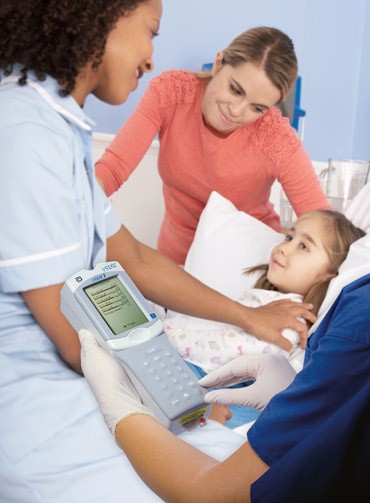 |
Foto: Diabetes Overall screening
Main research topics of the electrochemical group:
- Chemically and electrochemically modified electrode surfaces
- Nontraditional electrode materials
- Nanoparticles for electrochemical detection
- A miniaturisation of electrodes: noninvasive monitoring of biologically significant analytes
- Propagation of electrochemical methods among students
|
|
|
Foto: Student Scientific Conference 2017 (left to right Lenka Vatrsková, B.Sc. and Assoc Prof. Šiškanova, Dr. Broncová and Anastasiia Tupulova, B.Sc.
Cooperations:
Prof. Vladimir M. Mirsky
Brandenburg University of Technology Cottbus – Senftenberg, Germany
Prof. Martin Vrňata
University of Chemistry and Technology Prague, Department of Physics and Measurements
Prof. Pavel Matějka
University of Chemistry and Technology Prague, Department of Physical Chemistry
Dr. Martin Kuchař
University of Chemistry and Technology Prague, Laboratory of Forensic Analysis of Biologically Active Substances
Prof. RNDr. Jiří Barek
Charles University, Department of Analytical Chemistry
Selected scientific papers:
Shishkanova T.V., Broncová G., Fitl P., Král V., Barek J.: Voltametric detection of catecholamine metabolites using Tröger base modified electrode, Electroanalysis 30 (2018), 734-739. DOI: 10.1002/elan.201700635 https://doi.org/10.1002/elan.201700635
Broncová G., Matějka P., Němečková Z., Vrkoslav V., Shishkanova T.V.: Electrochemical detection of sialic acid using phenylboronic acid-modified poly(diaminobenzoic) acid, Electroanalysis 30 (2018), 672-680. DOI: 10.1002/elan.201700634 https://doi.org/10.1002/elan.201700634
Shishkanova T.V., Havlík M., Král V., Kopecký D., Matějka P., Dendisová M., Mirsky V.M.: Amino-substituted Tröger’s base: electrochemical polymerization and characterization of the polymer film, Electrochim. Acta 224 (2017), 439-445. https://doi.org/10.1016/j.electacta.2016.12.061
Shishkanova T.V., Fitl P., Král V., Barek J.: Nanoparticles functionalized with phenylboronic acid for the potentiometric detection of saccharides, J. Electroanal. Chem. 761 (2016), 106-111. https://doi.org/10.1016/j.jelechem.2015.12.009
Shishkanova T.V., Havlík M., Dendisová M., Matějka P., Král V.,: Synthesis and deposition of a Troger's base polymer on the electrode surface for potentiometric detection of a neuroblastoma tumor marker metabolite, Chem. Commun. 52 (2016), 11991-11994. DOI: 10.1039/c6cc06203b http://pubs.rsc.org/en/content/articlepdf/2016/cc/c6cc06203b
[urlnadstranka] => [poduzel] => Array ( ) [iduzel] => 48878 [canonical_url] => [skupina_www] => Array ( ) [url] => /research/electro [sablona] => stdClass Object ( [class] => stranka_ikona [html] => [css] => [js] => [autonomni] => 1 ) ) [48880] => stdClass Object ( [nazev] => Microwave and Terahertz Spectroscopy [seo_title] => Microwave and Terahertz Spectroscopy [seo_desc] => [autor] => [autor_email] => [perex] =>The research group of microwave and terahertz spectroscopy is focused on detailed theoretical analyses and experimental studies in the sub-infrared region of the electromagnetic spectrum. The interpretation of experimental data is based on the terms of effective quantum-mechanical Hamiltonians. The (homemade) microwave spectrometers (in cm, mm and sub-mm range) built in our laboratories can differentiate the (fine and) hyperfine structure of molecules with the accuracy of Cs standard. In addition to the instruments mentioned before, the laboratory is equipped with terahertz spectrometers working in a spectral range from 0.1 to 7.5 THz. These unique instruments allow us to study intermolecular interactions.
The subjects of study are high-resolution spectra of small, not yet thoroughly researched, molecules and their radicals (e.g. SNP, FCO2∙, and FSO3∙) and larger biologically active molecules in gas-phase. Terahertz spectrometers broaden the focus to measurements of solid (mostly active pharmaceutical ingredients) and liquid samples (e.g. ionic liquids).
[ikona] => [obrazek] => [ogobrazek] => [pozadi] => [obsah] =>| Head: |
Prof. Dr. Štěpán Urban |
| Members: |
Patrik Kania, Ph.D. Jan Koucký, Ph.D. Tereza Uhlíková, Ph.D. Ing. Lucie Kolesniková, Ph.D. Karel Vávra, Ph.D. |
| Ph.D. students: |
Kateřina Luková, M.Sc. (ŠU) Ivana Šlechtová, M.Sc. (ŠU) |
* supervisors listed in brackets: ŠU = Prof. Dr. Urban
[urlnadstranka] => [poduzel] => Array ( ) [iduzel] => 48880 [canonical_url] => [skupina_www] => Array ( ) [url] => /research/mikrovlnna_clone_25078 [sablona] => stdClass Object ( [class] => stranka_ikona [html] => [css] => [js] => [autonomni] => 1 ) ) [48882] => stdClass Object ( [nazev] => Atomic Spectrometry [seo_title] => Atomic Spectrometry [seo_desc] => [autor] => [autor_email] => [perex] =>The fundamental equipment includes two inductively coupled plasma mass spectrometers (ICP-MS). The older instrument Elan DRC-e by Perkin-Elmer exhibits excellent operating characteristics (detection limit, sensitivity, accuracy, and interference level). Furthermore, the instrument equipped with a reaction cell to remove interfering polyatomic ions. Newly, the laboratory is equipped with a high-end NexIon 350D by Perkin-Elmer. In addition to enhanced sensitivity, the instrument supports a new so-called universal cell technology. This technology eliminates spectral interference caused by polyatomic ions using ammonia as the reaction gas in both reaction cell and collision cell modes. Thanks to the ultra-fast signal measurement capability (minimum signal integration time of 0,01 ms), it is possible to analyse the size of individual nanoparticles. The laboratory is further equipped with the liquid chromatograph (LC) by Perkin-Elmer and the microwave decomposition device - Speed Wave for sample preparation.
The activity of the group is focused on speciation analysis of trace elements in plant materials using on-line LC and ICP-MS connection and trace element analysis in various materials (e.g. water, animal and plant tissues, soils, rocks and catalysts)
[ikona] => [obrazek] => 0002~~88jNL8nLLy7JO7xWobggNbukKD83taRIIcBVwS-1wjM_T8HY1MAFAA.jpg [ogobrazek] => [pozadi] => [obsah] =>| Head: |
Assoc. Prof. Antonín Kaňa, Ph.D. |
| Members: |
Dr. Magda Vosmanská Prof. Oto Mestek |
| PhD Students: |
Věra Kantorová, M.Sci. (AK) Ing. Petr Rudolf (AK) |
*supervisors listed in brackets: AK = Assoc. Prof. Kaňa
Group focus:
In recent decades, the focus of trace element analysis methods has shifted from optical methods (atomic absorption and optical emission spectrometry) to mass spectrometry methods. In particular, to inductively coupled plasma mass spectrometry (ICP-MS), which exhibits excellent operating characteristics suitable for routine applications. The detection limits for metals are often less than ng/L, and the dynamic range of the method exceeds ten concentration orders. The multi-elemental analysis is easy to perform.
The current equipment includes two inductively coupled plasma mass spectrometers. The older instrument Elan DRC-e by Perkin-Elmer has excellent performance characteristics and is equipped with a reaction cell to remove interfering polyatomic ions. This device is also used in the education of master's students. Newly, the laboratory is equipped with a high-end NexIon 350D by Perkin-Elmer. In addition to enhanced sensitivity, the instrument supports a new so-called universal cell technology. This technology eliminates spectral interference caused by polyatomic ions using ammonia as the reaction gas in both reaction cell and collision cell modes. Thanks to the ultra-fast signal measurement capability (minimum signal integration time of 0,01 ms), it is possible to analyse the size of individual nanoparticles.
The laboratory is further equipped with a liquid chromatograph (LC) by the Perkin-Elmer and Speed Wave- the microwave decomposition device for sample preparation.
Main fields of the interest :
Speciation analysis of trace elements in biotic matrices:
- The development of measurement methodologies using LC-ICP-MS on-line connection.
- The analyses of plant extracts, monitoring of variations in trace element speciation during vegetation (especially selenium).
- The speciation analysis of arsenic in food.
Application of ICP-MS method for determination of total element concentration:
- The development, validation, and estimation of uncertainties of determination of trace amounts of metals in biotic matrices by ICP-MS method.
- The application of the universal cell to remove interfering polyatomic ions.
- The research on the methodology of analysis of solutions with high organic content.
- The determination of trace elements in various matrices, e.g. animal and plant tissues, food and drink, pharmaceuticals, catalysts.
Characterisation of inorganic nanoparticles (NP) by single-particle (sp) ICP-MS
- Optimisation of measurement procedure
- Analysis of Ag NP in cosmetics
- Analysis of Ag NP in food (in cooperation with the Department of food analysis and nutrition)
|
Mass spectrometer PE Elan DRC-e
|
Microwave decomposition device Speedwave 4
|
The group is engaged in the development of advanced methods of vibrational spectroscopy and microspectroscopy, with an emphasis on overcoming the current limits of vibrational spectroscopic techniques (e.g. lowering the detection limit, nanoscale resolution, system stability). We focus mainly on surface-enhanced methods, namely surface-enhanced Raman scattering (SERS) and surface-enhanced infrared absorption (SEIRA). The basic principle of these techniques is the amplification of the spectral signal of analytes due to the interaction of analytes with electromagnetic radiation on nano- / micro-structured plasmon amplifiers (coinage metal-based substrates).
Currently, the research aims primarily at the use of conventional and surface-enhanced spectroscopic techniques for trace analysis and identification of drugs, natural compounds derived from plant material (with the focus on secondary metabolites), addictive alkaloids, and corrosion products on metal surfaces.
Various real and model systems are studied to elucidate the properties of cell membranes, skin components and layers in terms of barrier and permeation properties, which affect the bioavailability of topical and transdermal medicinal products, respectively.
[ikona] => [obrazek] => [ogobrazek] => [pozadi] => [obsah] =>| Head: |
Prof. Vladimír Setnička |
| Members: |
Martin Člupek, Ph.D. Vadim Prokopec, Ph.D Ing. Marie Švecová, Ph.D. |
| PhD students: |
Michaela Gráfová, M.Sc. (PM)* Zuzana Němečková, M.Sc. (PŘ) Veronika Skoupá, M.Sc. (VS) Lucia Becherová M.Sc. (PM) |
* Supervisors listed in brackets: PM = Prof. Dr. Matějka, PŘ = Assoc. Prof. Řezanka, VS = Prof. Setnička
[urlnadstranka] => [poduzel] => Array ( ) [iduzel] => 48883 [canonical_url] => [skupina_www] => Array ( ) [url] => /research/vibrational [sablona] => stdClass Object ( [class] => stranka_ikona [html] => [css] => [js] => [autonomni] => 1 ) ) [48884] => stdClass Object ( [nazev] => Chiroptical Methods [seo_title] => Chiroptical Methods [seo_desc] => [autor] => [autor_email] => [perex] => [ikona] => [obrazek] => [ogobrazek] => [pozadi] => [obsah] =>|
ROA/Raman with microscope
VCD/FT-IR
ECD
The principle of CD
In vivo Raman Microprobe
Supramolecular system
Counterfeit pharmaceuticals |
* Supervisors listed in brackets: VS = Prof. Setnička, PB = Prof. Dr. Bouř
|
The group provides teaching of radioanalytical methods within the bachelor's and master's studies. He also conducts research in the field of radioactive waste storage and determination of radionuclides in the environment.
[ikona] => [obrazek] => [ogobrazek] => [pozadi] => [obsah] =>| Head: |
Assoc. Prof. Pavel Řezanka, PhD |
| Members: |
Martin Člupek, PhD Jan Fähnrich, PhD Petr Večerník, PhD (ext.) Olga Plzáková |
| PhD students: |
Anna Pecková, M.Sc. (PŘ)* Marta Hybášková, M.Sc. (PŘ) |
* Supervisors listed in brackets: PŘ = Assoc. Prof. Řezanka, PhD
[urlnadstranka] => [poduzel] => Array ( ) [iduzel] => 48886 [canonical_url] => [skupina_www] => Array ( ) [url] => /research/radioanalytical [sablona] => stdClass Object ( [class] => stranka_ikona [html] => [css] => [js] => [autonomni] => 1 ) ) [48885] => stdClass Object ( [nazev] => Group of Separation Methods [seo_title] => Group of Separation Methods [seo_desc] => [autor] => [autor_email] => [perex] => [ikona] => [obrazek] => [ogobrazek] => [pozadi] => [obsah] =>|
|
Group activities: The Group of Separation Methods and Biomedical Analytical Chemistry is localized at the Department of the Analytical Chemistry and it is focused mainly on two research areas, (a) the development of new liquid and gas chromatography separation methods hyphenated with various detection techniques including mass spectrometry, and (b) the application of analytical methods for the preparation, separation, and study of biomedical systems based on small synthetic molecules and natural compounds. The development of new separation methods covers a broad variety of analytes with accent on pharmaceuticals and illegal drugs, the study of pharmacokinetics of the selected compounds in living organisms, and also participation in the development of new potential drugs. Biomedical activities comprise the design of molecular systems suitable for detection of analytes and the study of interactions of bioactive compounds, the design of molecular sensors and probes, the design of suitable formulations and formulation systems. Out students of bachelor, master, and PhD programs are extensively involved in all undergoing projects. The achieved results are published in impacted journals.
Equipment: The group is equipped with an adequate instrumentation including GC-MS/MS, LC-MS/MS, MALDI-TOF/TOF.
R&D and cooperation: The group participates in many Czech and international research projects and cooperates with application sphere. In the frame of several project it is tightly connected with many prestigious institutions, for instance, BIOCEV, The First Faculty of Medicine of the Charles University, and FHNW in Basel.
supervisors listed in brackets: DS = Assoc.Prof. David SÝKORA, PhD PŘ = Assoc.Prof. Pavel Řezanka, PhD |
